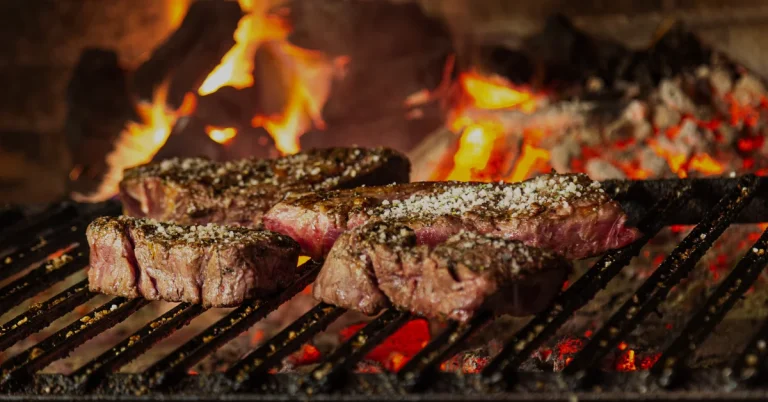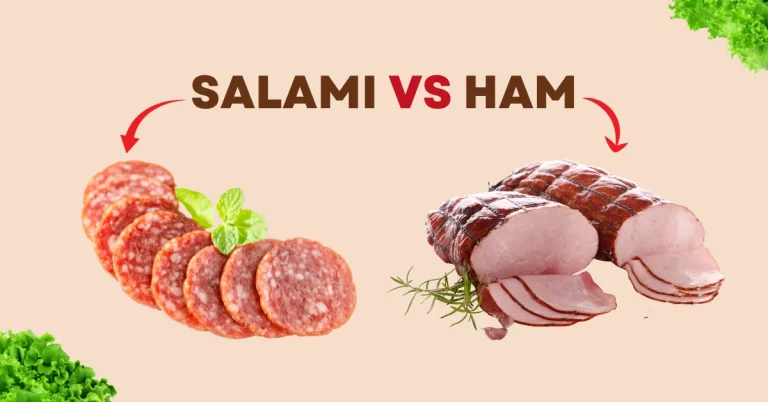How To Build Your Homemade Vertical Smoker

Vertical smokers are a popular choice for a reason. They’re compact, powerful, and perfect for infusing your meats with a smoky flavor.
Building your homemade vertical smoker can be a fun and rewarding DIY project. You can create a vertical smoker that meets your needs and preferences with suitable materials, tools, and instructions.
In this article, I will guide you through building your vertical smoker, from choosing the suitable materials to assembling the components and the final product.
So, let’s get started!
Planning Your Smoker
The planning stage sets the foundation for a successful and enjoyable smoking experience.
Material Selection
The first crucial decision is choosing the suitable material for your smoker’s body.
- Steel: Steel smokers have exceptional durability and heat retention. However, working with steel requires welding skills and proper safety gear.
- Cinder Block: Cinder blocks are an affordable and relatively simple option. They offer good insulation but require sealing to prevent leaks.
- Brick: Brick smokers provide ultimate heat retention and a timeless aesthetic. However, constructing a smoker with bricks necessitates advanced masonry skills.
Size Considerations
Smoker size is a balancing act. Consider how much food you typically smoke. A giant smoker offers more space but can be trickier to manage the temperature.
Conversely, a smaller smoker is more portable but limits your cooking capacity. Finding the sweet spot that suits your needs is vital!
Design Features
Now, let’s explore the essential features that will transform your smoker into a champion:
- Airflow Management: Effective airflow control is crucial. Dampers and vents will allow you to regulate the flow of smoke and heat for optimal results.
- Smoke Chamber and Firebox: The heart of your smoker lies in the separation and insulation between the smoke chamber, where your food resides, and the firebox, where the heat originates.
- Optional Features: Elevate your smoker with a water pan to help regulate temperature and prevent dryness. A temperature gauge is a handy tool for monitoring the cooking process, and multiple cooking racks allow you to smoke various foods simultaneously.
With a clear blueprint, we’re ready to move on to the exciting part – building your smoker!
Building Your Smoker – The Smoke Chamber
The smoke chamber is the heart of your smoker and this crucial component provides the perfect environment for cooking and smoking your favorite meats to perfection.
Whether you’re using steel, cinder block, or brick, constructing the smoke chamber requires attention to detail and careful planning to ensure optimal heat retention and smoke circulation.
Let’s explore one by one.
Steel Smoker
If you are skilled at welding, start your own. Otherwise, hire a professional.
Here’s what you’ll need:
- Steel sheets (thickness depends on your preference, typically 1/8″ to 3/16″)
- Welding machine and safety gear (helmet, gloves, respirator)
- Metal cutting tools (grinder, reciprocating saw)
- Drill and rivets (for non-welded connections)
- Safety First! Always prioritize safety when working with metal and welding equipment. Wear proper protective gear and ensure good ventilation in your workspace.
- Cutting the Steel: Measure and mark out the desired dimensions of your smoker chamber on the steel sheets. Use your cutting tools to create the individual panels.
- Welding the Chamber: Carefully weld the panels to create a rectangular box. Ensure all seams are tight to prevent leaks. For beginners, consider using a pre-made steel drum as the base for your smoker chamber.
- Creating a Door: Cut a door opening into one of the panels. Weld hinges onto the door and chamber for easy access. Use heat-resistant gasket material around the door frame to make a tight seal.
Cinder Block Smoker
What we like, cinder blocks offer a cost-effective and relatively simple way to build your smoker.
Here’s what you’ll need:
- Cinder blocks
- Mortar or high-temperature sealant
- Metal rods (optional for reinforcement)
- Stacking the Blocks: Start by laying the cinder blocks in a rectangular pattern to form the base of your smoke chamber. Overlap the blocks in a running bond for stability.
- Sealing the Gaps: Use mortar or a high-temperature sealant to fill the gaps between the cinder blocks. This will prevent leaks and ensure proper smoke flow.
- Adding Reinforcement (Optional): For extra stability, especially with larger smokers, insert metal rods horizontally into the cinder block cores as you build.
Brick Smoker
Building a smoker with bricks requires masonry skills. If you’re new to bricklaying, seeking guidance from an experienced friend or professional is recommended.
Here’s what you’ll need:
- Bricks
- Mortar mix
- Trowel
- Level
- Building the Foundation: Start by laying a solid foundation for your smoker using bricks and mortar. Ensure the foundation is level for proper construction.
- Building the Chamber: Following proper bricklaying techniques, construct the smoke chamber walls using the mortar mix to bind the bricks together. Maintain a level course throughout.
- Door and Finishing Touches: Like the steel smoker, create a door opening and incorporate heat-resistant gasket material for sealing. Once complete, allow the mortar to cure properly before proceeding.
The next step is to build firebox and how to assemble the complete smoker unit.
The Firebox
The firebox is the engine of your smoker, where the heat originates. Here’s how to construct it and integrate it with your smoke chamber:
Firebox Material Options
- Steel Sheet: This is a popular choice for its durability and ability to withstand high temperatures. You can use leftover steel from your smoke chamber construction or purchase a pre-made firebox unit.
- Pre-made Firebox Unit: Many grilling stores offer pre-made firebox units that are a convenient option, saving you time and fabrication work.
Building a Basic Firebox
- Firebox Size and Shape: The firebox should be smaller than the smoke chamber. A standard ratio is 1:3 (firebox: smoke chamber). Aim for a rectangular shape with a height for easy access and fuel management.
- Air Intake and Ash Pan: Ensure your firebox has a good air intake at the bottom to promote airflow and combustion. You can create an air intake by cutting holes in the bottom of the firebox or using a dedicated air intake vent. Consider incorporating a removable ash pan at the bottom for easy removal.
- Insulation: It is crucial to keep the firebox well-insulated from the smoke chamber to prevent excessive heat transfer. You can achieve this by using a layer of air space between the firebox and smoke chamber or lining the firebox with firebricks.
Attaching The Firebox To The Smoke Chamber
- Steel Smoker: Weld the firebox directly to the smoke chamber, ensuring a tight connection.
- Cinder Block Smoker: Carefully position the firebox next to the smoke chamber and seal the connection using mortar or high-temperature sealant.
- Brick Smoker: Like the cinder block smoker, position the firebox and use mortar mix to create a secure and sealed connection.
Smoke Stack and Damper
- Smoke Stack: Install a smoke stack (flue) on the top of the smoke chamber. The smoke stack allows smoke and heat to escape while regulating temperature. You can use a pre-made flue pipe or fabricate one from sheet metal.
- Damper: A damper is a valve installed on the smokestack or firebox door that allows you to control airflow and smoke output. A properly adjusted damper is essential for achieving and maintaining desired smoking temperatures.
Assembly and Finishing Touches
- Heat-resistant Paint or Seasoning: Once construction is complete, apply heat-resistant paint to your smoker for aesthetics and protection (consult the paint manufacturer’s instructions for proper curing). Alternatively, you can season your smoker by burning a fire for a few hours to create a protective layer.
- Casters (Optional): For added portability, consider attaching casters (wheels) to the bottom of your smoker.
Congratulations! You’ve built your smoker.
Conclusion
Building your smoker is an enriching experience.
Fire it up, fill the air with the aroma of smoky goodness, and prepare delicious masterpieces that will have your friends and family begging for more.

I’m responsible for managing and coordinating content creation, distribution, and optimization. I’m the former editor-in-chief of PMQ Pizza Magazine and have written for several B2B food publications over the years, including Restaurant Hospitality, Flavor & The Menu, Restaurant Business, National Culinary Review, FSR, Restaurant Startup & Growth, and more.






